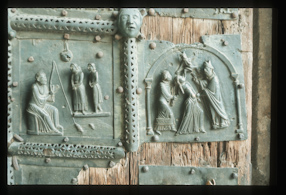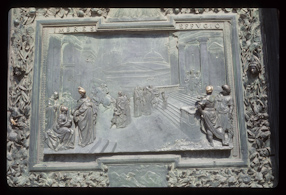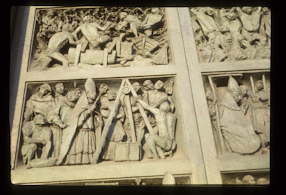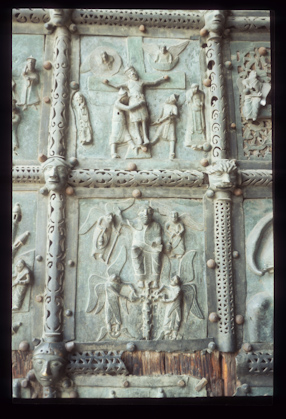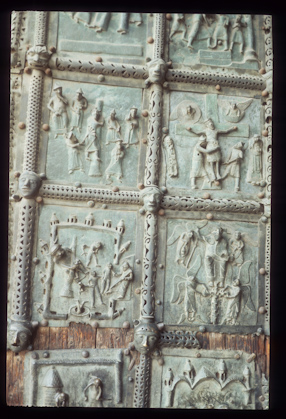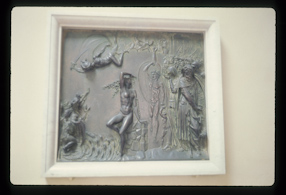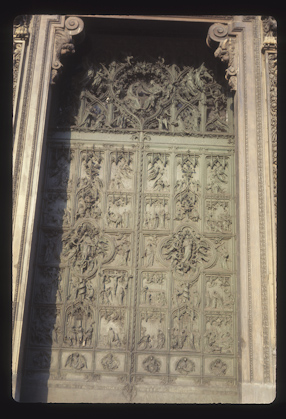DOOR (1-12/12)
Rituals and symbols, in particular, these ones connected with a Christian culture, were of interest to Hasior in different fields of his art. A collection, entitled "Drzwi" ["Door"], is one of few such specific ones in "Notatniki" ["Notebooks"]. In the Christian-occidental culture this is a symbol of passage – a gate through which you enter the everlasting kingdom. The characteristic panel (wooden or metal) doors with scenes in quarters appear in late antiquity, they are a characteristic monument of pre-Romanesque art. Examples collected by Hasior are accidental. Photos Nos. 1, 5-7 present fragments of the door to the Basilica of San Zeno in Verona, consisting of 48 bronze plates. This monument is dated at the half of the twelfth century. The particular presentations include, inter alia, images of saints, a portrait of the sculptor, theological (divine) virtues: faith, hope, love or musical themes. Some quarters came into being in Hildesheim (where there are earlier Bernward Doors) and other ones in Verona. Hasior photographed them probably during his journey across Italy at the occasion of preparing an exhibition in the Polish Pavilion in Venice in 1970.
After the artist's death, his friend, Podhale sculptor, Andrzej Szarek, arranged a metal, half-opened door with a fire burning inside in front of the Hasior's workshop in the former Lounge Area of the Warszawianka Sanatorium in Zakopane.
The set includes "Notatnik" ["Notebook"]: "Drzwi" ["Door"] (181).
